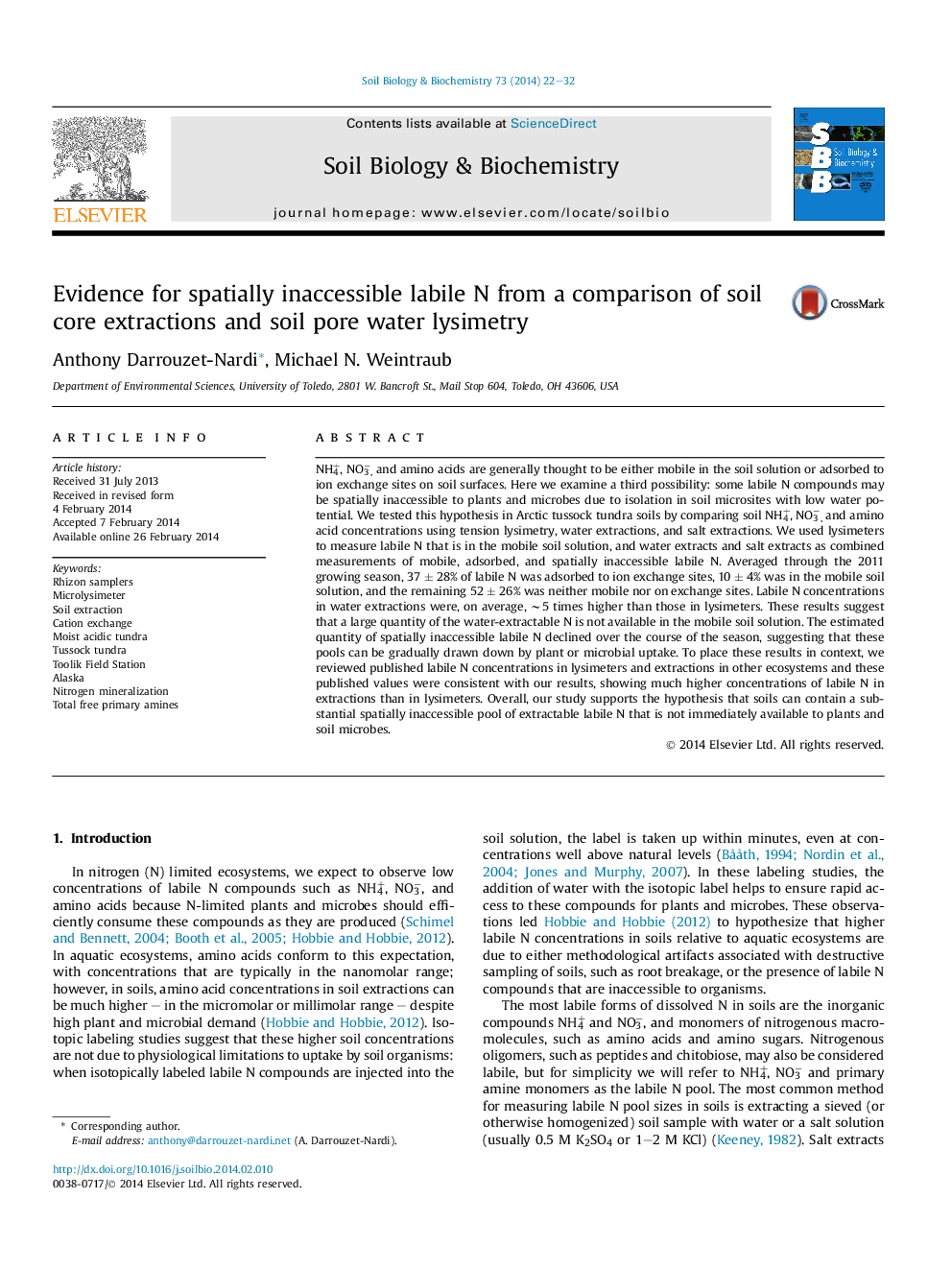| Article ID | Journal | Published Year | Pages | File Type |
|---|---|---|---|---|
| 2024657 | Soil Biology and Biochemistry | 2014 | 11 Pages |
•We test the hypothesis that labile N can be spatially inaccessible in soils.•Lysimeter and extractable N data from an Arctic case study support our hypothesis.•Though not immediately available, inaccessible N may be seasonally drawn down.•Review of N values in other ecosystems suggests inaccessible N may occur elsewhere.
NH4+, NO3−, and amino acids are generally thought to be either mobile in the soil solution or adsorbed to ion exchange sites on soil surfaces. Here we examine a third possibility: some labile N compounds may be spatially inaccessible to plants and microbes due to isolation in soil microsites with low water potential. We tested this hypothesis in Arctic tussock tundra soils by comparing soil NH4+, NO3−, and amino acid concentrations using tension lysimetry, water extractions, and salt extractions. We used lysimeters to measure labile N that is in the mobile soil solution, and water extracts and salt extracts as combined measurements of mobile, adsorbed, and spatially inaccessible labile N. Averaged through the 2011 growing season, 37 ± 28% of labile N was adsorbed to ion exchange sites, 10 ± 4% was in the mobile soil solution, and the remaining 52 ± 26% was neither mobile nor on exchange sites. Labile N concentrations in water extractions were, on average, ∼5 times higher than those in lysimeters. These results suggest that a large quantity of the water-extractable N is not available in the mobile soil solution. The estimated quantity of spatially inaccessible labile N declined over the course of the season, suggesting that these pools can be gradually drawn down by plant or microbial uptake. To place these results in context, we reviewed published labile N concentrations in lysimeters and extractions in other ecosystems and these published values were consistent with our results, showing much higher concentrations of labile N in extractions than in lysimeters. Overall, our study supports the hypothesis that soils can contain a substantial spatially inaccessible pool of extractable labile N that is not immediately available to plants and soil microbes.
